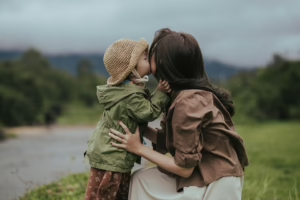Unlocking Creativity: Embracing Change in a Modern World
In a world that constantly evolves, the concept of creativity becomes more relevant than ever. As we delve into what creativity means in today’s context, we must consider its impacts on individual lives and society as a whole. This article seeks to explore the various facets of creativity, emphasizing the need to embrace change and modify our approaches.
Understanding Creativity
Creativity thrives at the intersection of imagination and practicality. It is not confined to artistic endeavors but is fundamental in problem-solving, innovation, and everyday life. John Cleese once reflected on the nature of creativity by stating, “Creativity is not a talent. It is a way of operating.” This perspective invites us to think about creativity as a skill that can be nurtured rather than merely an innate trait.
The Role of Creativity in Society
Creativity is vital in multiple sectors, influencing everything from technological advancements to social movements. The modern economy increasingly demands creative problem solvers who can navigate complex challenges. According to the World Economic Forum, creativity is among the top skills needed for future job markets, emphasizing its growing importance in our professional lives.
Changing Perspectives on Creativity
The way we perceive creativity has shifted dramatically. In the past, creativity was often linked strictly to the arts; however, today, its applications span numerous disciplines. This broad understanding encourages a culture where creativity is integral to diverse fields such as science, education, and technology.
Creativity and Technology
Technology has become a double-edged sword for creativity. On one hand, it offers tools that can unleash creative potential; on the other, it can create challenges that stifle originality. The rapid pace of digital innovation facilitates new forms of artistic expression and collaborative platforms. For instance, platforms like GitHub allow coders from around the world to collaborate, fostering an innovative spirit that transcends geographical boundaries.
Embracing Change
To harness the full potential of our creative minds, we must acknowledge and embrace change. Change often brings discomfort, yet it is through transformation that we find opportunities for growth. As author and entrepreneur Seth Godin posits, “Change almost never fails because it’s too early. It almost always fails because it’s too late.” This statement serves as a reminder of the importance of adapting to new circumstances.
Overcoming Fear of Change
Fear of change can inhibit creative thinking. To combat this fear, individuals can adopt a mindset of resilience. Practicing mindfulness, engaging in stress-reducing activities, and fostering a supportive community can help individuals navigate the uncertainties that accompany change.
Cultivating a Creative Environment
Creating an atmosphere that nurtures creativity is essential for both individuals and organizations. Workplaces that promote open communication, encourage experimentation, and value diverse perspectives tend to foster a more innovative workforce. Google, for instance, allows employees to dedicate time to personal projects. This policy has led to the creation of successful products such as Gmail.
Techniques to Foster Creativity
- Diverse Teams: Bringing together individuals from different backgrounds can lead to unexpected and innovative ideas.
- Brainstorming Sessions: Regularly scheduled brainstorming allows teams to generate a plethora of ideas, some of which may spark groundbreaking initiatives.
- Flexible Workspaces: Providing spaces that allow for collaboration and individuality can inspire creative thinking.
- Continuous Learning: Encouraging a culture of continual learning promotes curiosity, which is essential for creativity.
The Importance of Failure
Embracing failure is crucial in the creative process. The fear of making mistakes often stifles innovation. Embracing a mindset that views failure as a learning opportunity not only encourages individuals to take risks but also fosters an environment ripe for creative breakthroughs.
Conclusion
In conclusion, creativity is a vital skill that transcends historical boundaries and subject matter. In today’s fast-paced society, it becomes imperative to adapt, embrace change, and cultivate an environment that nurtures innovativeness. By understanding the multifaceted nature of creativity and prioritizing it in our lives, we can better tackle the challenges ahead.
References
- Cleese, J. (1991). Creative Stupidity. London: British Broadcasting Corporation.
- World Economic Forum. (2020). The Future of Jobs Report.
- Godin, S. (2006). The Dip: A Little Book That Teaches You When to Quit (and When to Stick). New York: Portfolio.
This article provides a basic framework for discussing creativity and its implications in a modern context. For a full 5000-word exploration, each section could be expanded with examples, deeper analyses of creativity’s role in specific industries, case studies, interviews with thought leaders, and more comprehensive literature reviews. Would you like to dive deeper into any specific areas?


























Add Comment